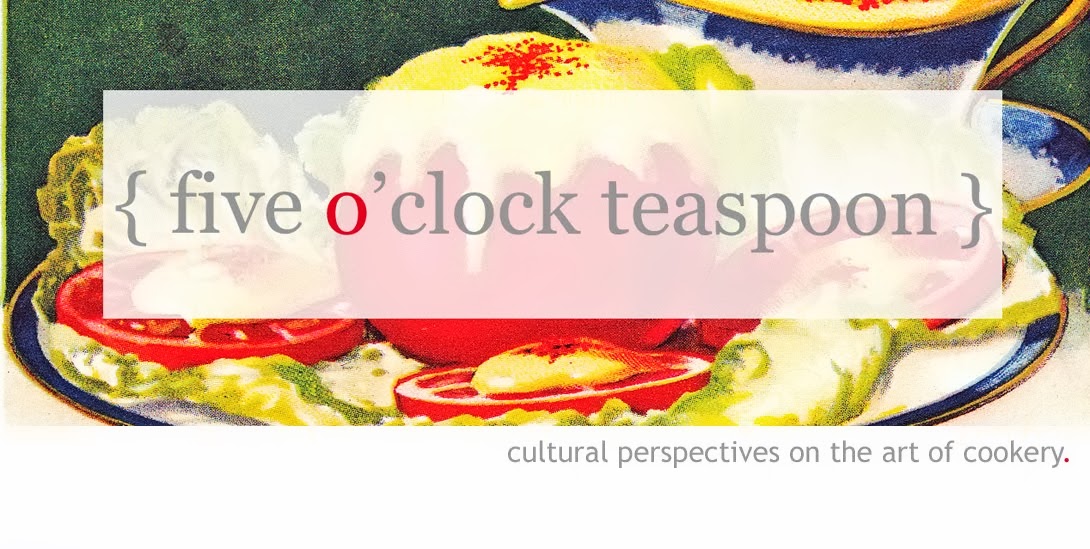There is another approach altogether found in writing that is dedicated to recreating food in literature. From the fanciful musings in Mark Crick's Household Tips of the Great Writers to blogger Anna the Red's meticulously rendered Ghibli feast (reconstructed after the Miyazaki anime films) such works are part cookbook, part tribute and often feature significant historical research and analysis. For these writers the challenge is to fabricate the fictional meal, often with just a few words to go by.
Madge Lorwin's Dining with Shakespeare (1976) is a delightful, sumptuous exploration of what she terms quotation menus-- period dishes inspired by quotations from Shakespeare's plays. Building on the success and enthusiasm of a collation she prepared after a performance of Twelfth Night, Lorwin began an annual feast, with each menu planned in accordance with a particular Shakespearean play. As Lorwin argues, "Shakespeare makes frequent and effective use of cooks and cooking, eating and drinking. In fact, there is not a play in which he has not woven some scene around food or drink, or based some simile or metaphor upon them. He uses these to create an atmosphere, set a mood, bring out the lineaments of character. The homely, everyday activities relating to food Shakespeare turns into scenes of poignance, tragedy, or comedy."
 |
| Folger Shakespeare Library Digital Image Collection. Woodcut illustration from A pleasant history of the life and death of Will Summers. 1637. http://www.folger.edu. |
Perhaps by making and eating the food of our favorite books we feel we may enter their world, experiencing it physically rather than just mentally. Like Alice's initiation to Wonderland, a piece of a special cake may be all that is necessary to to transport ourselves to another time and place. I prepared a dish from the birthday menu-- A Sallet of Boyled Leeks--from A New Booke of Cookerie by John Murrell (1615). Soft, parboiled leeks are dressed with butter and vinegar,-- a favorite medieval salad dressing--garnished with hardboiled eggs, and served atop crusty bread.
 |
| A Sallet of Boyled Leeks, from A New Booke of Cookerie by John Murrell (1615), in Dining with Shakespeare by Madge Lorwin (1976). |
A Sallet of Boyled Leeks
from the working version in Dining with ShakespeareIngredients
8 leeks, about 1 inch in diameter at the white end
1 quart water
4 Tbs butter
4 Tbs vinegar
1 Tbs currants, parboiled
1/2 tsp brown sugar
1/8 tsp cinnamon
1/8 tsp ginger
2 hard boiled eggs
2 slices buttered toast, quartered
Cut off the roots and green parts of the leeks and discard them. Wash the white sections in several cool waters until they are free of sand. Then drop them in boiling water for five minutes. Drain and cool until the leeks are comfortable to handle, then mince or slice them very thin.
Melt the butter in a small saucepan and add the vinegar, minced leeks, currants, brown sugar, cinnamon, and ginger. Cook over very low heat until the leeks are tender, stirring them occasionally. Peel and quarter the eggs.
Arrange the toast quarters in a heated serving dish. Spoon the leeks over them and garnish with the quartered eggs.
Read Quotation Menus, Parts II & III, then dream up some of your favorite fictional feasts.

